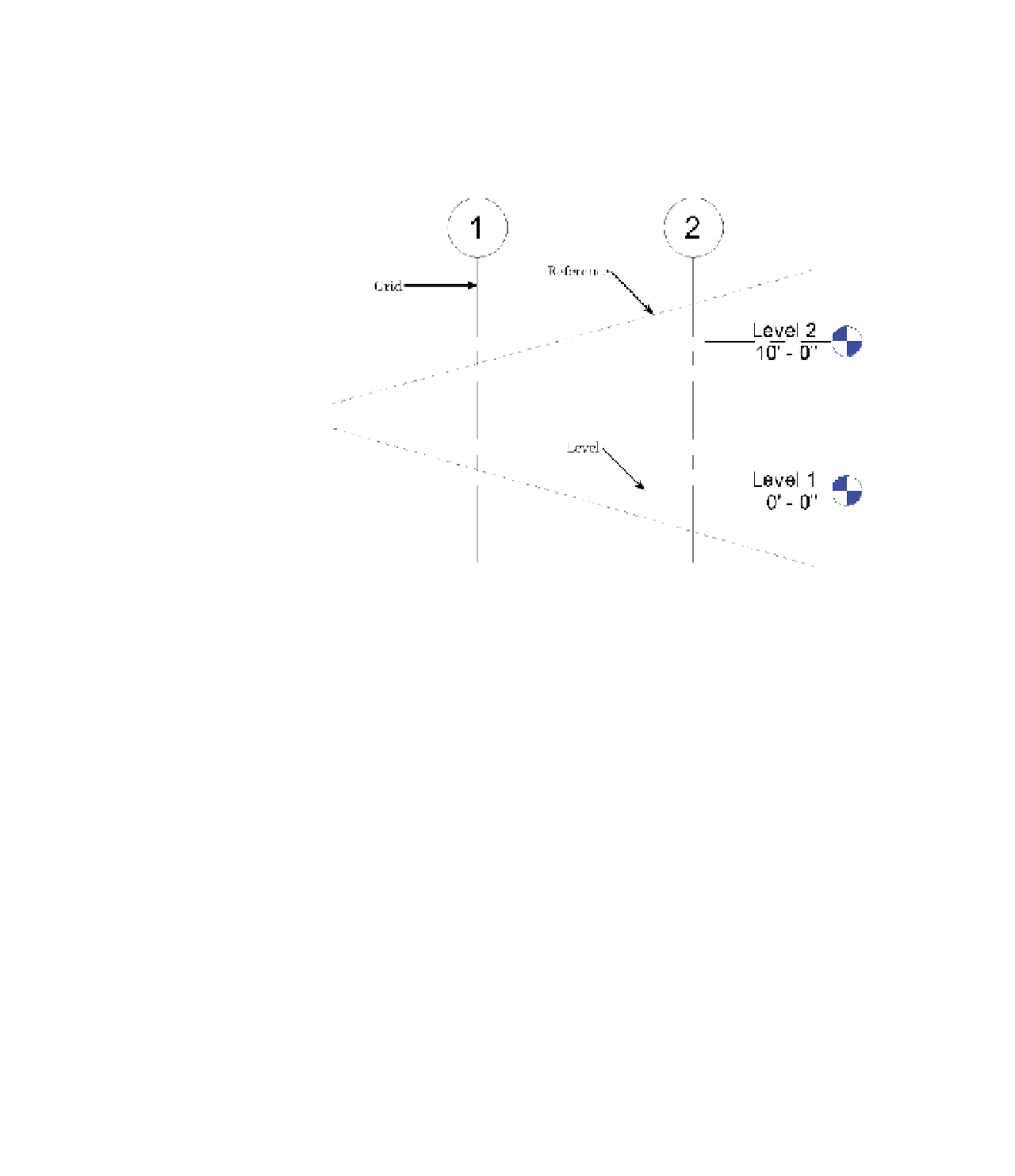Graphics Programs Reference
In-Depth Information
Introducing Datum Objects (relationships)
Data (plural) are sometimes referred to in Revit software as
datum objects
and consist of
references, grids, and levels (Figure 2.23). Datum objects establish geometric behavior by
controlling the location and extents of your content (the building, the stuff that goes in a
building, and the stuff you need to document your building).
Figure 2.23
datum objects
Reference planes can be created in any 2D view from the main ribbon tabs (Architecture,
Structure, or Systems), but once created, they may not be visible in 3D. After you add reference
planes to your project, they can be set and seen from the Work Plane panel. This will allow you
to work with respect to the desired work plane.
Grids are used to locate structural elements in your project. You are not required to include
grids in your project, but they are quite useful in managing structural walls and columns. Like
reference planes, grid lines can be added to any 2D view. Keep in mind that grids can only be
perpendicular to levels. Furthermore, grids are only visible in views that are perpendicular to
the grid. So if the grid is in a north-south orientation, you'll be able to see it only in plan and
from the east-west orientation.
Levels are datum objects that are parallel to the ground plane. They serve several purposes.
First, they are the main method for placing and managing the elevation (or
Z
-location) of
content. Virtually all content placed in a Revit model has a Level parameter. You can even move
objects from one level to another simply by changing this property in the Properties palette.
Levels also function as constraints for objects such as walls and columns. These objects have
top and bottom constraints that can be set to levels so that they will automatically update if
the levels are adjusted. Levels may be seen and created only in elevation and section views;
therefore, you can't create levels in plan, and they can't be diagonal to the ground plane.














